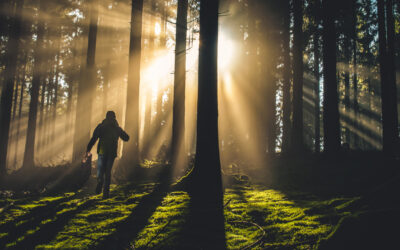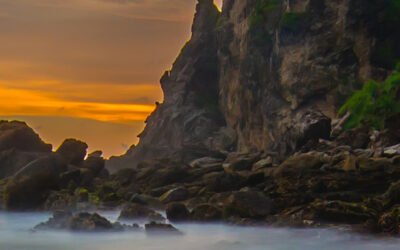Photo by Alfred Kenneally on Unsplash.
Are We in Need of “Triage” for Wilderness?
Editorial Perspectives
April 2022 | Volume 28, Number 1
The word “triage” can be considered from multiple perspectives. The medical emergency context focuses on urgency and those situations that are life threatening and need immediate treatment. But we also use “triage” as a metaphor or process to describe situations where an allocation of resources and efforts need prioritization. Wilderness and natural resource protection requires professionals to deploy limited resources across expansive landscapes, typically requiring the prioritization of actions to address complex issues.
Some wilderness areas, particularly those close to large population centers, are experiencing rapid changes. Critical impacts to both visitor experiences and ecological resources are occurring as we witness exponential day use increases and further global climate destabilization. Wilderness stewards are being challenged to address the implications of these critical impacts and current collaborative planning strategies may not be responsive enough for urgent, emerging issues. Therefore, are we in need of “triage” for wilderness?
Dr. Christopher Armatas, research social scientist at the Aldo Leopold Wilderness Research Institute, and I further examined the concept of “triage” at a recent webinar offered by the National Wilderness Stewardship Alliance (http://www.wildernessalliance.org/) as part of an ongoing extension of the annual National Wilderness Workshop. Among an audience of wilderness managers, stewards, advocates, and professional practitioners, we considered the following questions: When is short-term, immediate action needed and how do we “triage” wilderness management decisions? When such triage is needed, what practices and strategies can managers apply in these situations? And how do we ensure that short-term actions lay a foundation for continued long-term collaborative planning?
Our conceptualization of “triage” recognizes that different situations require different immediacy. Emergencies, such as search and rescue operations or wildland fire ignitions, provide far less decision space and need immediate action. Creating stewardship plans and long-term collaborative planning efforts often require a multidisciplinary team with a multi-year timeline. But “triage” and short-term actions are somewhere within these lower and upper bounds. They represent actions that address issues and critical impacts in a shorter timeframe (e.g., 12-18 months potentially). Or as a participant of the webinar suggested, triage may be needed when our perception of critical impacts in each context shifts from anecdotal to measurable.
Why might “triage” be needed? Many of our current planning and management frameworks have developed around iterative process where we identify goals, define management directions, identify appropriate and applicable strategies, and then implement, monitor, and evaluate over time. But in a context of rapid change, shifting baselines, and varying priorities, do we need an option to be more responsive? The pandemic has shown us that on-the-ground conditions can chance rapidly. Our attention can change as we focus on important values such as diversity, equity, and inclusion. And what is the original starting point in the iterative cycle no longer exists by the time we return or revisit it in the iterative process?
Therefore, we may need to further develop short-term and long-term strategies for wilderness management. This may include considering “Big D” decisions over time and space, but also “little D” decisions that are nimble and responsive. And we should strive to identify what short-term “triage” actions are appropriate while still maintaining public engagement and support. As part of a larger management strategy, “triage” actions can work with long term planning and decision-making to provide wilderness managers and stewardship with the best practices necessary for wilderness stewardship.
For more on this topic, a full recording of the webinar is available and provided by the National Wilderness Stewardship Alliance at https://youtu.be/l1yzyuiRHVI
In this issue of IJW, Roger Kaye examines what nature looks like in the Anthropocene. Janet McMahon describes biodiversity as the language of wilderness. Peter Pettengill, Roisin Creedon-Carey, and Sage Lalor discuss wilderness solitude in an era of isolation. And Elizabeth Perry explores the development of nature-based tourism in Oman.
About the Author
ROBERT DVORAK is editor-in-chief of IJW and professor in the Department of Recreation, Parks, and Leisure Services Administration at Central Michigan University: email: dvora1rg@cmich.edu
Read Next
What is visitor use management? Identifying functional and normative postulates of an interdisciplinary field of study
The axioms of Visitor Use Management can guide us towards a future that enriches the lives of the public while preserving our cherished resources for generations to come.
Nature in the Anthropocene: What it no longer is, Will never again be, and What it can become
Nature changes in response to changing conditions, and so must our conception of it.
Biodiversity: The Language of Wilderness
“Biodiversity: The language of wilderness” is part of Northeast Wilderness Trust’s “Wild Works” series, which characterizes the values and benefits of wild, unmanaged landscapes.



